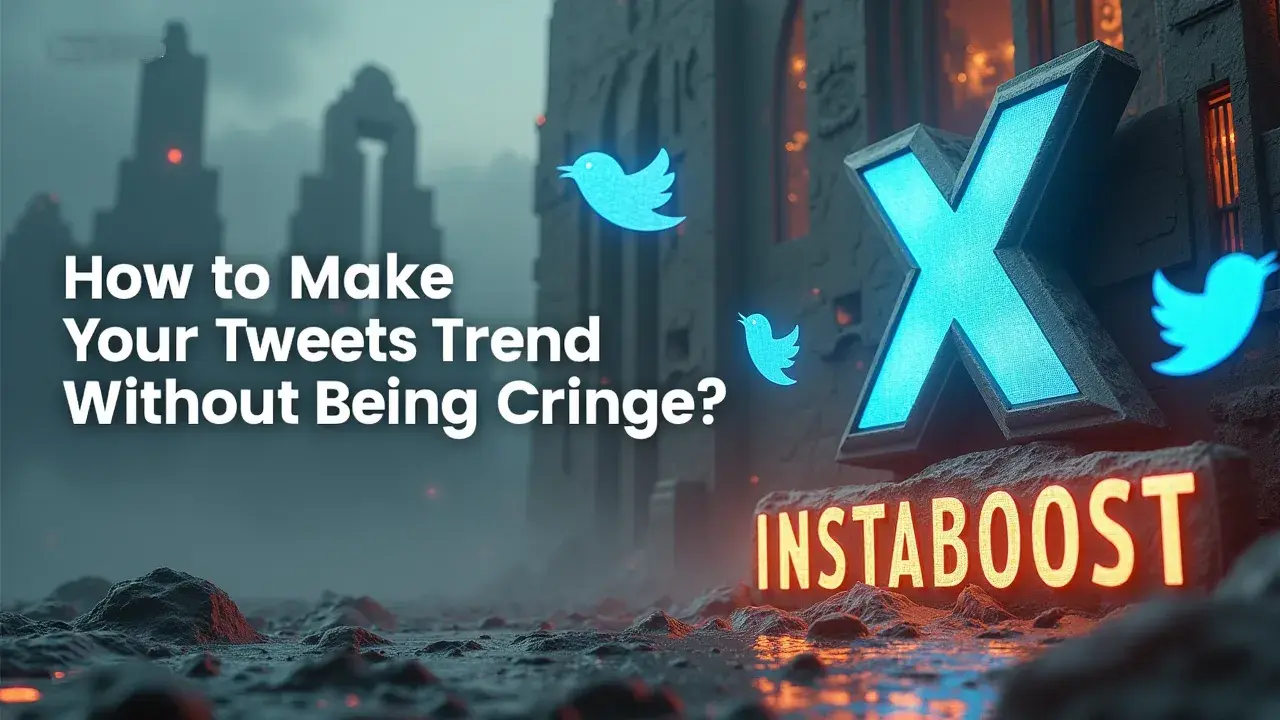How To Make Tweets Trend Without Being Cringe?
Trending comes from authentic ideas that invite real conversation, not forced hype. Focus on original thought, clear phrasing, and timing that aligns with ongoing interest so replies and shares grow organically. Use a tone that respects your audience and avoids overused hooks, while encouraging genuine engagement through questions or concise insights. The smart path is consistent quality that earns interaction because it feels natural and worth sharing.
Why Chasing Trends Doesn’t Mean Selling Out
Getting noticed on Twitter isn’t really about chasing every trend or stuffing your tweets with whatever hashtags are big that day. If you want people to actually pay attention, it’s worth thinking about what draws them in to begin with.
Focusing on timing, knowing who you’re talking to, and whether what you’re saying matches what people care about right now – that usually works better than just trying to grab quick attention. People can tell pretty fast if you’re being yourself, and it stands out when you’re not. Tweets that sound like you and fit into your own corner of Twitter usually get more genuine replies.
Focusing on timing, knowing who you’re talking to, and whether what you’re saying matches what people care about right now – that usually works better than just trying to grab quick attention. People can tell pretty fast if you’re being yourself, and it stands out when you’re not. Tweets that sound like you and fit into your own corner of Twitter usually get more genuine replies.
Some people are interested in things like affordable X engagement, but it’s the kind of back-and-forth you get that matters more. Sharing something that’s actually useful or starting a conversation tends to get a better response than pushing for hype.
The way tweets spread – who retweets you, and when – can matter as much as what you say. If you’re just doing things for attention, people pick up on it pretty quickly. It’s probably better to just respect the people following along and not assume they won’t notice when you’re off-key...
The way tweets spread – who retweets you, and when – can matter as much as what you say. If you’re just doing things for attention, people pick up on it pretty quickly. It’s probably better to just respect the people following along and not assume they won’t notice when you’re off-key...

Why Authenticity Outranks Algorithms
I keep running into the same idea from different teams, and I’m not sure it holds up. There’s this belief that unless you fill your tweets with hashtags or jump on every meme, nobody will notice. It almost feels like joining the conversation means letting go of what makes you different.
But the accounts that actually get attention seem to do something else. They talk in a way that’s pretty normal – more like someone you’d want to talk to than a brand forcing it. The tweets that get shared aren’t usually the loud or generic ones; they’re the ones that tap into what people already care about, or they just sound right for that audience.
Tools like INSTABOOST seem to lean into this, focusing more on figuring out what people respond to instead of just pushing out content. I saw a discussion about how you can expand your X network just by being consistent and actually paying attention to what matters to your followers. When a tweet does well, it’s often because it’s specific and feels like there’s a real person behind it – not just someone chasing trends.
Tools like INSTABOOST seem to lean into this, focusing more on figuring out what people respond to instead of just pushing out content. I saw a discussion about how you can expand your X network just by being consistent and actually paying attention to what matters to your followers. When a tweet does well, it’s often because it’s specific and feels like there’s a real person behind it – not just someone chasing trends.
Having a steady perspective seems to help, even if it’s not the most popular take. That’s what people seem to remember. It’s not random luck. Most tweets that take off look like they were put together with some care – they notice what’s getting attention but don’t lose their own voice. If you want your tweets to stand out at all, it probably makes more sense to focus on what you actually think and what your followers care about, instead of repeating what’s already everywhere. Over time, people seem to pick up on that...
Build Your Twitter Momentum With Patience and Precision
If you want your Twitter presence to last, it’s more like looking after a small garden than trying to win a race. The tweets that stick with people are usually the ones you spend some time on – sharing a thought, adding to it, seeing what response it gets, letting it grow a bit. Instead of pushing out a bunch of posts just to see if any of them hit, it helps to stop and think about what people actually care about, or what might get a real conversation going. Sometimes that’s reacting to something happening right now, or asking a question, or just noticing something genuine that feels specific.
You don’t have to be everywhere or keep up with every trend. Choosing which conversations to join – or leave alone – matters, and so does noticing when the tone or focus in your corner shifts a little. If you do jump in on a meme or a trending topic, putting your own take on it comes across better than just repeating what’s out there. There isn’t really a trick to getting things to catch on. What works is showing up regularly, paying attention, and taking the time to reply, even in small ways. Over time, small, steady interactions are what help people notice your posts, and it seems like Twitter notices too.
Just seeing a few people like a tweet can be enough to encourage others to join in. That’s more or less how accounts like INSTABOOST have built good followings – not by chasing everything, just by keeping up with regular, simple engagement. After a while, it adds up, and you probably stop thinking so much about what you posted last week, or whether you missed something big…















